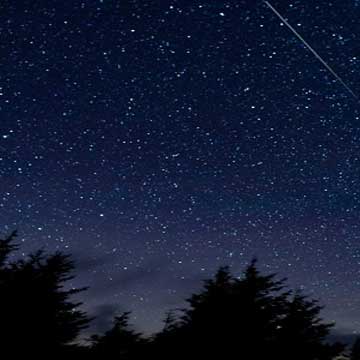 New Delhi:
New Delhi: Oceans and Space are two of the most exciting sources of crazy conspiracy theories. One such rumour that has gripped the social media lately is about the 12th August 2017 being a no night date. Yes, according to a viral story published online, the sky would be so brightly lit that there would be no night on Saturday. Just imagine, 24 hours of daylight on August 12, which will also see a remarkable celestial event of Perseid Meteor Shower 2017.
Forecasters are predicting a Perseid outburst this year with double normal rates on the night of Aug. 11-12 eve. This rumour was breathed to life by an Astronomy-Physics.com article claiming the date to witness “the brightest shower in recorded human history,” with August’s shooting stars in the company of illuminating bright full moon. As the buzz over the possibility of an extraordinary event gains momentum, NASA reveals the truth about ‘12th August No Night Date’.
According to NASA, the rumours doing the round that the 2017 Perseid Meteor Shower on August 12, will be so bright that it will be visible even during the daytime are baseless. Perseids are the stream of debris and stretches along the orbit of the comet Swift–Tuttle. The celestial event with the falling bright shooting stars takes place every year, much to the excitement of astrophile. But every year, there is a new theory associated with this annual occurrence and this time around is the claim of 12th August will be a ‘No Night Date’.
The Perseids arrive in late July and occasionally appear until about August 9, before peaking on August 12 this year. But the presence of the moon which was a full moon on August 7 will be illuminated by 80 percent a week later dimming the effect of shooting stars. “To be honest, it’s not a good year” for the Perseid shower, said Robert Massey, acting executive director of the Royal Astronomical Society (RAS) in London. “You might, if you’re lucky, see maybe 20 an hour,” he told AFP.
Bill Cooke, head of NASA’s Meteoroid Environment Office at the Marshall Space Flight Center, said in an official statement, “For one thing, the Perseids never reach storm levels (thousands of meteors per hour). At best, they outburst from a normal rate [of] between 80-100 meteors per hour to a few hundred per hour.” He further added, “The best Perseid performance of which we are aware occurred back in 1993 when the peak Perseid rate topped 300 meteors per hour. Last year also saw an outburst of just over 200 meteors per hour.”
Cooke says, “A meteor every couple of minutes is good and certainly [makes it] worth going outside to look, but it is hardly the ‘brightest shower in human history,'” Cooke said. “The Leonid meteor storms of the late 1990s and early 2000s were much more spectacular and had rates ten times greater than the best Perseid display.” The best time to watch Perseids meteor shower for the stargazers will be after midnight from a dark open space. Perseid Meteor Shower is not the only exciting cosmic event in the month of August as there was also a Lunar Eclipse on August 7 and a coming Total Solar Eclipse on August 21.
 New Delhi: Oceans and Space are two of the most exciting sources of crazy conspiracy theories. One such rumour that has gripped the social media lately is about the 12th August 2017 being a no night date. Yes, according to a viral story published online, the sky would be so brightly lit that there would be no night on Saturday. Just imagine, 24 hours of daylight on August 12, which will also see a remarkable celestial event of Perseid Meteor Shower 2017.
New Delhi: Oceans and Space are two of the most exciting sources of crazy conspiracy theories. One such rumour that has gripped the social media lately is about the 12th August 2017 being a no night date. Yes, according to a viral story published online, the sky would be so brightly lit that there would be no night on Saturday. Just imagine, 24 hours of daylight on August 12, which will also see a remarkable celestial event of Perseid Meteor Shower 2017. 